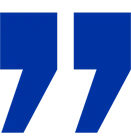DECT NR+
The world’s first non-cellular 5G technology standard
NR+ provides a robust, standardized solution that is unmatched by any other non-cellular technology. By utilizing known cellular techniques proven by billions of devices already in the field, Nordic Semiconductor is leveraging its existing low-power nRF91 Series technology to offer a seamless and highly integrated DECT NR+ solution.
Why choose DECT NR+?
| LOW COST OF OWNERSHIP: DECT NR+ allows you to own your own private 5G network, meaning no base stations, no SIM cards, and no subscriptions. | |||
| SCALABLE AND RELIABLE: A DECT NR+ network can scale from 100 to 1 million nodes in a single square kilometer and offers high reliability with technology built on proven cellular technology standards. | |||
| LICENSE-EXEMPT FREQUENCY: DECT NR+ gives access to the dedicated, license-exempt 1,9 GHz DECT band, which offers less interference than other available bands and is (almost) globally allocated. | |||
What is NR+
NR+ is a non-cellular radio standard recently included as part of the 5G standards by the ITU.
NR+ employs a self-healing, decentralized, and autonomous mesh network, making it easy to add new devices and eliminating any single points of failure. It has a flexible and highly scalable network structure that has use-cases and applications across many industries. NR+ utilizes known cellular techniques and provides a robust standardized solution that is unmatched by any other non-cellular technologies.

Kjetil Holstad, Nordic Semiconductor’s EVP for Product Management
What NR+ will effectively do is democratize the ability for any company or organization to build its own private 5G network and run and optimize as they wish, free of a network operator. And do this using the license-exempt and globally available 1.9GHz frequency spectrum dedicated for this technology.
Overview and benefits
The physical radio layer in NR+ reuses known techniques from cellular radios, reaching the same level of reliability that is proven by billions of devices already in the field.
NR+ supports point-to-point, start and mesh topologies. A key feature of the NR+ mesh network is its self-healing and self-organizing properties. Each node can function as an access point with a direct connection to the internet, and nodes can change roles based on the needs of the network. This property eliminates single points of failure in the network and autonomously resolves high-traffic situations that can occur in dense IoT networks.
As a DECT technology, NR+ operates on the global and license-exempt 1.9 GHz DECT band, which significantly cuts deployment costs by eliminating the need for frequency planning or certification from operators.
The range and dense topology properties of NR+ make it highly scalable. The same 1 square kilometer area can be covered by a little over 100 devices or scaled up to more than 1 million devices, while still maintaining the same reliable, low latency communication.
Designed with an emphasis on ultra-high reliability and ultra-low latency, DECT NR+ has over 99.99% packet delivery and end-to-end low latency, designed to reach one-millisecond latency between devices on the radio interface. With NR+ delivering the same low latency and reliability previously only matched by wired connections, opens the possibility for low latency systems to consider wireless operation for the very first time, even with kilometers of range. This makes NR+ an open, standardized alternative to existing proprietary technology.
Why NR+
Listen to Kjetil Holstad and Svein-Egil Nielsen talk about Nordic's investment into DECT NR+ (NR+) and our vision for the technology.